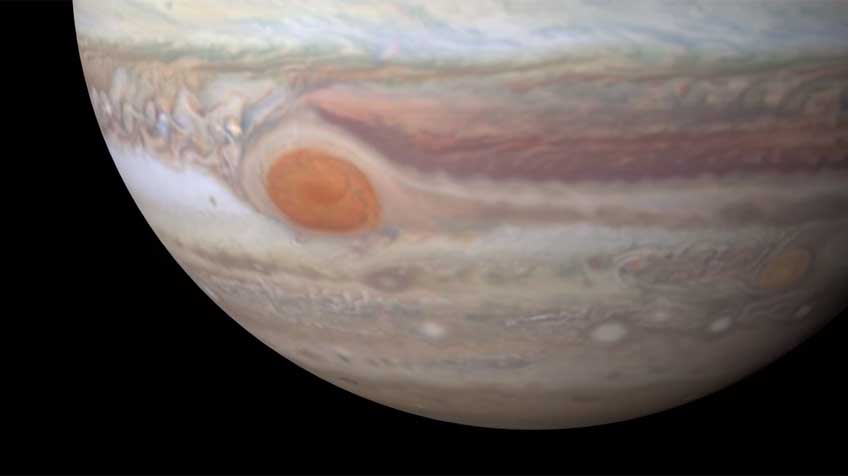Thanks to the work done by space and ground telescopes, NASA and the European Space Agency were able to obtain amazing images of Jupiter, detailing its atmospheric properties such as its large red dot, super storms and giant hurricanes. Across the planet, the NSF’s NOIRLab Research Center announced this week.
In 2017, three images showing the gas giant under infrared, visible and ultraviolet light were taken simultaneously. The visible and ultraviolet light was captured by the Hubble Space Telescope camera, while the infrared was captured by the Gemini North telescope located in Hawaii.
Observing astronomical objects at different wavelengths of light allows scientists to obtain information that would not otherwise be available, and surprisingly, Jupiter looks very different in all three images. However, researchers noticed something even more interesting when they looked at the planet’s Great Red Spot, a popular system of series of storms large enough to engulf the entire earth.
They found that large space is a feature that is visible and isolated in ultraviolet light, but becomes almost invisible to infrared wavelengths. In contrast, Jupiter’s clouds, rotating in opposite directions, are clearly visible in all three scenes.
Scientist Mike Wong compared these voids to “Edis in the Ocean” within the Great Red Spot. ‘When the thunderbolts rotate, you can get the little inconsistencies of this streaky edis by rolling. That’s the way we see these holes. So it may be weak turbulence, but it stretches when you turn it around, ”he explained.
Another small storm system known as Red Spot Jr. is also observed in normal and ultraviolet light. In the visible wavelength image, it can be seen that it has a clearly defined red outer border with a white center, but it disappears completely in infrared view.
In addition to providing Jupiter’s mind-blowing vast orbit, these observations provide valuable information about the planet’s atmosphere because each wavelength explores different layers of clouds and fog particles, the researchers say.





:quality(85)/cloudfront-us-east-1.images.arcpublishing.com/infobae/KTKFKR763RBZ5BDQZJ36S5QUHM.jpg)